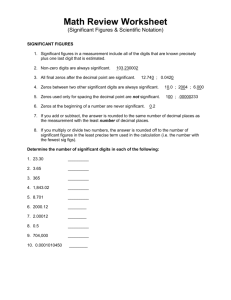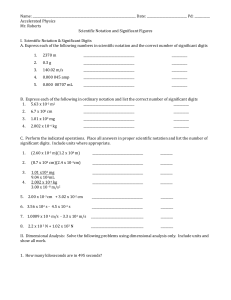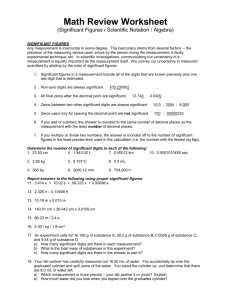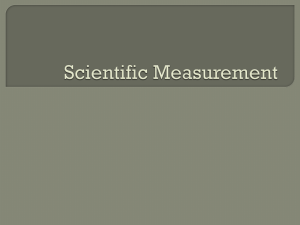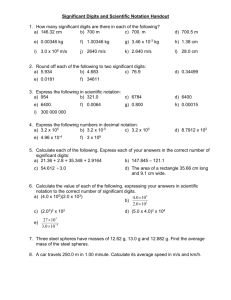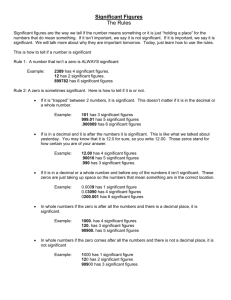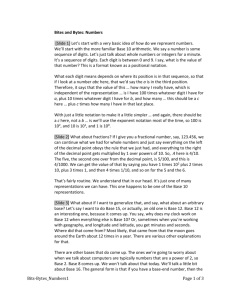Lesson09A
advertisement
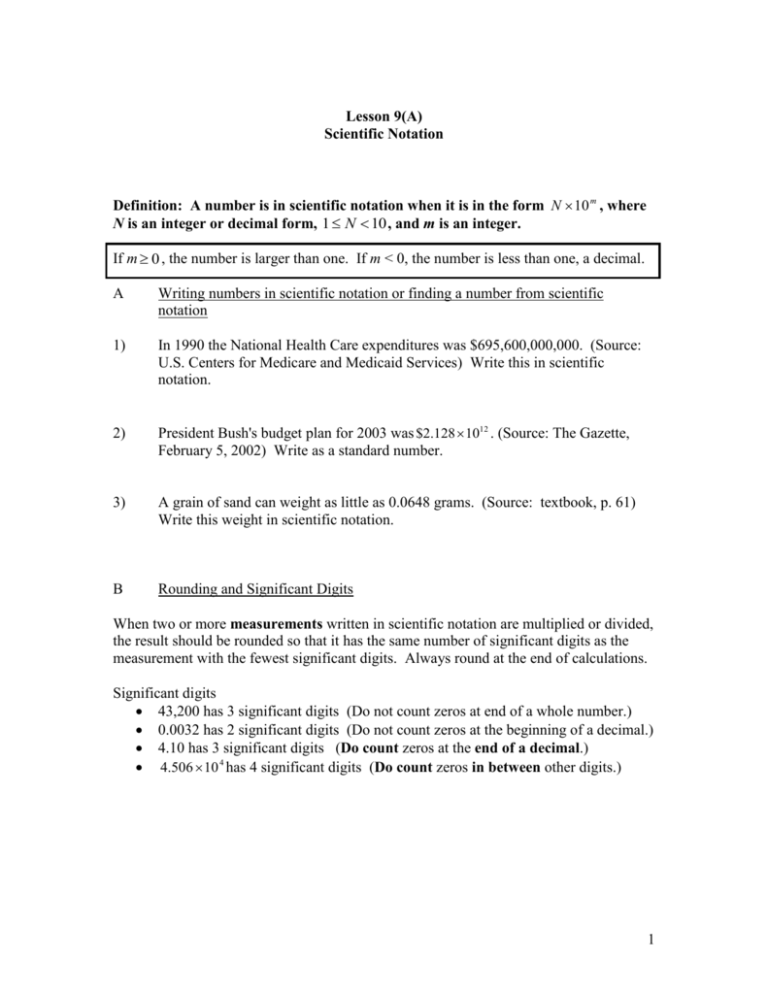
Lesson 9(A) Scientific Notation Definition: A number is in scientific notation when it is in the form N 10 m , where N is an integer or decimal form, 1 N 10 , and m is an integer. If m 0 , the number is larger than one. If m < 0, the number is less than one, a decimal. A Writing numbers in scientific notation or finding a number from scientific notation 1) In 1990 the National Health Care expenditures was $695,600,000,000. (Source: U.S. Centers for Medicare and Medicaid Services) Write this in scientific notation. 2) President Bush's budget plan for 2003 was $2.128 1012 . (Source: The Gazette, February 5, 2002) Write as a standard number. 3) A grain of sand can weight as little as 0.0648 grams. (Source: textbook, p. 61) Write this weight in scientific notation. B Rounding and Significant Digits When two or more measurements written in scientific notation are multiplied or divided, the result should be rounded so that it has the same number of significant digits as the measurement with the fewest significant digits. Always round at the end of calculations. Significant digits 43,200 has 3 significant digits (Do not count zeros at end of a whole number.) 0.0032 has 2 significant digits (Do not count zeros at the beginning of a decimal.) 4.10 has 3 significant digits (Do count zeros at the end of a decimal.) 4.506 10 4 has 4 significant digits (Do count zeros in between other digits.) 1 D Multiplication/Division with Scientific Notation Multiply or Divide and give answer using the correct number of significant digits. 1) (7.0 1012 )(3.0 10 8 ) 2) 4.8 10 3 4.0 10 5 3) (2.31 10 2 )mm (3.1 10 2 )mm 4) (4.2 10 5 )(6.1 10 3 ) 5) 1.26 10 9 4.0 10 5 6) (4.0 10 2 )(3.2 10 3 ) 3.1 10 8 2 D 1) Application Problems On October 28, 1998 an IBM computer could perform 3.9 10 8 operations per second. This was 15,000 times faster than the normal desktop computer at the time. How many operations per second would a normal computer perform? (Source: IBM) 2) The average distance from earth to the sun is 9.3 10 7 miles. How long would it take a rocket traveling 2.9 10 3 miles per hour to reach the sun, if this was possible? 3) A light year is approximately 5.88 1012 miles. If the diameter of the Milky Way galaxy is about 5.88 1017 miles, how many light years is it from one end of the galaxy to the other? 3

